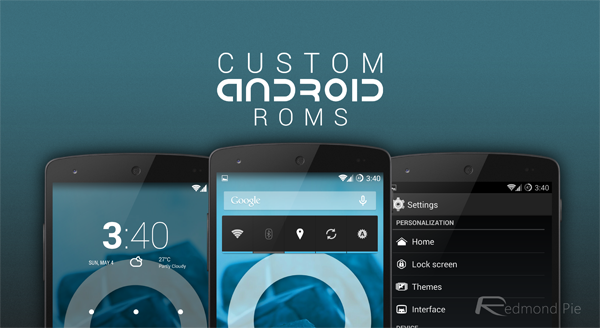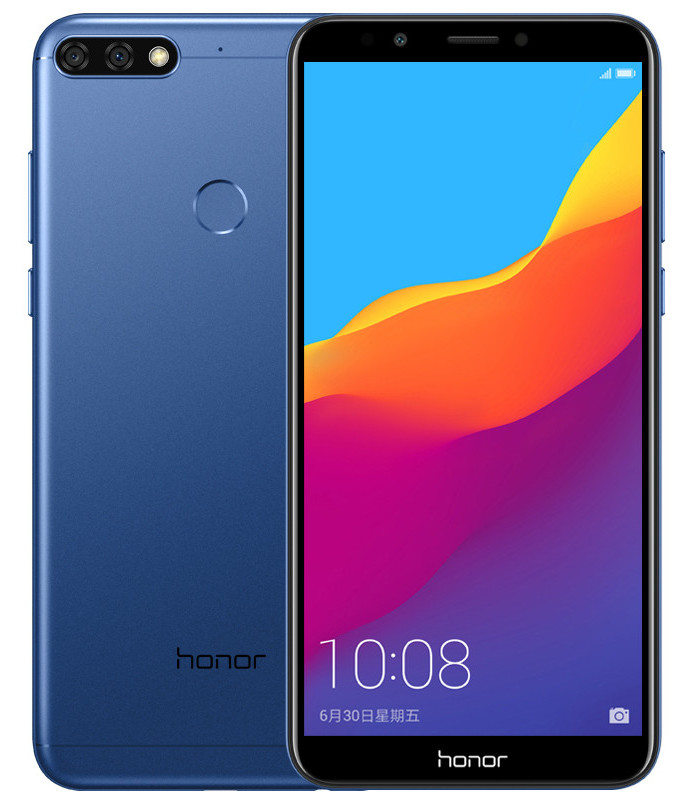
Table of Contents
- 1 Android Terms You Should Know
- 2 Why You Want Custom ROMs
- 3 The Downsides Of Custom ROMs
- 4 How to Fully Backup Your Device Without Root
- 5 How to Root Your Android Device
- 6
- 7 Most Important Fastboot Commands
- 8
- 9 Custom Recovery Mode
- 10 Understanding Custom ROM Versions
- 11 Custom ROMs
- 12 Custom Kernels
- 13 Conclusion
- 14
Android is the most popular mobile operating system on the market. It offers a variety of apps and settings, but eventually reach its limits at a certain point. Rooting your phone (or tablet) will offer you thousands of tweaks, skins, custom ROMs, and new apps that you should not miss out at all. It will also help you to remove bloatware.
DON’T MISS:
Everything you need to know about rooting your Android
SEE ALSO:
Android Customizations you can do Without Root
Android Terms You Should Know
Before we get started, I would like to explain a few terms. This will help you to understand what we are talking about.
ART
ART stands for Android Runtime and replaces the formerly used Dalvik cache. It was introduced in Android 4.4 and has completely taken over in Android 5.0. ART is said to improve battery life and app performance.
Bootloader
The Bootloader is your phone’s software foundation. It’s basically what runs before your operating system starts (like a PC’s BIOS). As many manufactures don’t want you to modify your phone’s OS, it is locked by OEM’s, it needs to be unlocked before you are able to root your phone or install custom ROMs.
Brick
This is something you don’t want to happen to your Android. Like the name already implies, a bricked phone (or tablet) can only be used as a paperweight or nice decoration for your apartment. Bricked devices are irreversibly damaged and won’t work anymore. This can, for instance, happen if damaged ROMs are installed or wrong firmwares are flashed. Always make sure to read instructions and verify checksums (a set of numbers that identify the file) to make sure nothing goes wrong. If you’re lucky and your device is only soft-bricked, meaning that it does not boot but still turns on, you might be able to get it back to life. But if it is hard bricked then you are in trouble.
BusyBox
Android, being based on Linux/Unix, offers a limited amount of UNIX commands. BusyBox will implement more commands that are necessary for some root apps to work properly. So you will need busybox installed, you can install it from play store.
Custom ROM
A custom ROM is a modified version of the Android operating system. Tweaks, additional features, different themes or an enhanced performance are usually included. Custom ROMs also offer the possibility to use a newer, unreleased, version of Android on your phone that might usually not be available for your device because of restrictions from manufacturer or providers.
Dalvik
Dalvik is a virtual machine that processes Android app code. Consequently, it is responsible for translating app code into actions on your Android device.
Fastboot
Fastboot is a diagnostic- and engineering tool which offers you several features such as launching in recovery mode or flashing image files.
Kernel
The kernel is the brain of your phone that controls how the system and hardware interact. It’s basically the lowest level of your operating system that manages memory and hardware.
NAND partition
NAND stands for “Negated AND” or “NOT AND” and describes the hard drive partition that stores all system relevant information like the bootloader, recovery mode or the kernel.
NANDroid backup
A NANDroid backup is a complete system backup of your Android device. This backup can be restored later and might save your phone after flashing a faulty ROM or theme, in case your device is not booting or in bootloops. Read here complete method to make Nandroid backup.
Recovery Mode
Recovery mode offers you the functionality to perform system-level tasks , backing-up your devices or install custom ROMs. Android offers a limited stock recovery function. So you will need to install a custom recovery. Custom recoveries like ClockworkMod Recovery, TWRP Recovery offer additional features and are easier to use.
Root
Rooting will give you full administrator access of your device. It might also void your warranty, so make sure to handle your device with care after rooting it. You are always able to revert this process by simply flashing a stock-ROM (the original ROM installed by your phone’s manufacturer). Doing this will also “restore” your warranty.
S-OFF
S-OFF means that the NAND partition of your Android device is unlocked. This mostly applies to HTC phones.
Xposed Framework
Xposed Framework is an app that can be installed on a rooted Android device which offers custom ROM like features on stock Android. It has been updated and is now fully compatible to Android 5.0, Android 6.0 and Android 7.0.
Why You Want Custom ROMs
Update Frequency
Using a custom ROM usually results in more frequent updates that fix bugs and introduce new features.
- A quality update can be faster because it doesn’t involve the bureaucracy of 30 different project managers, 15 vice presidents, and 5 dozen marketing departments.
- A ROM developer usually gains a loyal community which beta tests his updates in real life situations and provide feedback, or even fixes bugs – that’s the grace of open source software.
- ROMs are usually free and supported by optional donations. If you can’t afford to pay for it, you don’t have to.
- Most custom ROMs out there are updateable over the air (OTA) and without reinstalling anything.
Better Performance And Efficiency
Custom ROMs are oftentimes faster, more efficient, and use less memory because
- the developer ripped out useless garbage, such as carrier installed apps
- the developer optimized the kernel.
DON’T MISS:
5 Advanced Ways to Improve Battery Life on Android
Upgrade To A Better Version Of Android
You can upgrade to a version of the OS that has not yet been released for your device, or never will be. This is possible in 2 situations:
- A leaked version of the new ROM showed up online, and the developer got on it.
- A ROM from another phone was ported by the developer to work on yours.
Ability To Install Apps To The SD Card
Most custom ROMs come with the ability to install applications to the SD card, called Apps2SD (or A2SD).
If you have run out of space on your phone Apps2SD is a killer feature to have.
The Downsides Of Custom ROMs
Of course, there are dangers of using custom ROMs which you should be aware of.
Something Could Go Wrong
First of all, something may go wrong with the flashing process and leave your phone in a bricked state. The chances of this are pretty low nowadays, and most of the time you can restore it back to normal.Try to go for the ROM that has been tested by time and has lots of positive feedback.
Clean Wipe
In order to install a custom ROM, you need to perform a clean wipe.This means you will lose all existing data, so you have to backup everything first.
Potential Problems
Custom ROMs could have bugs… but then so do the stock ones. However, in case you do find a bug, you actually report it – post in the ROM forum and you will more than likely get an answer back and your bug acknowledged.
You May Void Your Warranty
Custom rooting will void your warranty because you will “break the seal” on the boot loader by installing a custom one which on some phones apparently can’t be undone. Because of that, the manufacturer might be able to tell that the phone has had a custom ROM installed and not honor the warranty, in case you need to use it.
How to Fully Backup Your Device Without Root
If your Android device is not rooted yet, you won’t be able to perform NANDroid backups. I would suggest to have a proper backup, because there is always a chance of error and you don’t want to lose your important data and brick your device.
How to Root Your Android Device
The rooting process differs from device to device which makes it impossible to give general instructions on rooting here. However you can read general rooting guide here.
READ ALSO:
12 Things To Do Before Rooting Android Phones
Most Important Fastboot Commands
When dealing with Android rooting, you often have to work with fastboot. Fastboot is part of Google’s Android SDK and is mostly used to re-flash partitions on your Android device, similar to (custom) recovery mode. You usually use fastboot in the following manner:
fastboot [ ]
Here’s a list of all options and commands:
Options
-w erase userdata and cache
-s specify device serial number
-p specify product name
-c override kernel commandline
-i specify a custom USB vendor id
-b specify a custom kernel base address
-n specify the nand page size. default: 2048
Commands
update reflash device from update.zip
flashall flash boot + recovery + system
flash [ ] write a file to a flash partition
erase erase a flash partition
getvar display a bootloader variable
boot [ ] download and boot kernel
flash:raw boot [ ] create bootimage and flash it
devices list all connected devices
reboot reboot device normally
reboot-bootloader reboot device into bootloader
Now that we’ve covered all fastboot commands and options, let’s have a closer look at the most important ones and what they do / mean:
fastboot oem unlock
This is a special command. Using this command, you can unlock the bootloader.
fastboot flash recovery recovery.img
This command will flash a custom recovery to your Android device. Depending on the file name, you need to change the bold part of the command. Please not that this only works with *.img files
fastboot -w
Caution: This command will completely wipe your device.
fastboot update filename.zip
This command will update your ROM based on the provided *.zip file.
Custom Recovery Mode
The standard Android recovery mode has very limited functions. That’s why custom recoveries like Team Win Recovery Project (TWRP) and ClockworkMod Recovery (CWM) are used. They offer the possibility to flash custom ROMs which is not possible with the stock recovery mode. Other features include a file browser for update.zips, adb shell and NANDroid backups. Without a custom recovery you won’t be able to flash a custom ROM.
TWRP – Team Win Recovery Project
Team Win Recovery Project‘s custom recovery offers an easy and touch mode interface. It includes all typical recovery features needed to install custom ROMs, kernels, other tweaks. You are also able to backup and restore your device using TWRP.
CWM – Clockworkmod Recovery
ClockworkMod Recovery is one of the most popular custom recovery modes. However, in the last 2 years TWRP took over the throne and became the most popular recovery. It also includes all advanced recovery features like installing custom ROMs and other files, as well as a backup and restore function. You can control the CWM UI via touch or key-input.
Understanding Custom ROM Versions
As Custom ROMs are constantly improved, they usually come in four different categories: Nightly, Milestone, Release Candidate and Stable. Details of each version are given below:
Nightly
Nightly versions are released first and can be highly experimental and unstable. Especially early versions of a new custom ROM can have many bugs and missing features. If you want to have the latest features at any cost – go for nightlies!
Milestone Snapshot
Milestone Snapshots are basically nightly versions that have reached a certain milestone. They can be regarded as being more stable, but may include certain bugs and issues. Since they are only created every few weeks (or months), they won’t have the latest features that might be included in the nightly versions. If you are looking for the latest features while having a rather stable system, check out milestone snapshots.
Release Candidate
Release candidates, as the name already implies, are one of the last builds before the stable version of a custom ROM is released. RCs are mostly stable but might have a few minor issues. If you’re looking for something stable and ready for daily use, you should go with release candidates!
Stable
Stable versions are the most stable versions around, with all or nearly all problems fixed. Some stable ROMs may still include some smaller issues or certain things not working. Stable versions are definitely the safest way to go, but it might take months before a new stable version with new features or fixes is released.
Official, Unofficial & Combined Releases
It is also important to say that custom ROMs are often available as official and unofficial releases. Unofficial use the source code of the official release and adapt it to devices not supported by the main developers. Unfortunately, this often leads to a delay. In addition to that, many developers combine features of different custom ROMs.
Custom ROMs
Custom Roms offer you a variety of new features, tweaks and visual enhancements. The best source to find a working one for your device is the XDA-Developers forum or any other local forum. Many custom ROMs are based on either Stock Android or LineageOS, formerly called CyanogenMod. The easiest way to find the best custom ROM for you is to compare their features or simply test them for a few days.

LineageOS (formerly called CyanogenMod)

LinageOS, formerly known as CynaogenMod is the most popular and used custom ROM for Android. This is mostly due to the fact that it offers the stock Android experience with some performance and usability tweaks to a wide range of devices. If your Android device comes with a custom skin (such as Samsung, Sony or LG devices) – LineageOS is your best bet at getting to the closest Stock Android experience as possible.
The latest LineageOS version is 14.1 and it’s based on Android 7.1 Nougat. To download the latest version, head over to the download page and select your manufacturer and device if your device is supported.
Custom Kernels
Kernels are the brain of your Android device. They communicate between software and hardware. Therefore, they are responsible for managing things like CPU / GPU clocking speed, screen sensitivity / colors or voltage. By using a custom kernel you can not only improve battery life, but also increase system performance.
Many custom ROMs already come with their own kernels. This is done to implement software communication of the custom ROM with the hardware of the device and also to ensure a better performance. Nevertheless, you are often also able to flash custom kernels to custom ROMs. If you decided to stick to a rooted version of stock Android, flashing a new kernel can offer you additional performance with the convenience of a stock OS.
Conclusion
Flashing custom recoveries, ROMs and Kernels is always risky. You should read more than one forums before doing anything. You should must read comments below every tutorial and you should how to recover your device if something goes wrong. After any damage no one will be responsible except you.
If you liked this article share on social media. To keep reading our interesting articles subscribe our newsletter or RSS and follow us on social media.

 Everything you need to know about rooting your Android
Everything you need to know about rooting your Android Android Customizations you can do Without Root
Android Customizations you can do Without Root 5 Advanced Ways to Improve Battery Life on Android
5 Advanced Ways to Improve Battery Life on Android




